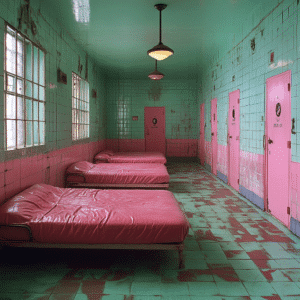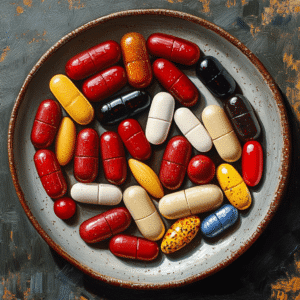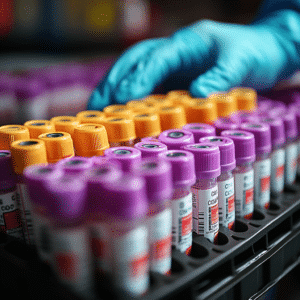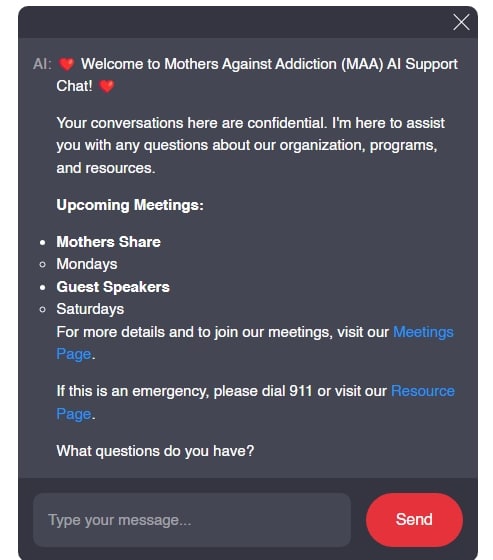Understanding how block grants work can make a significant difference for communities, especially for families navigating the murky waters of addiction. Families hurting from addiction or grappling with the loss of a loved one need more than just love and understanding; they need strong community support systems. And guess what? Block grants can shine in that role.

Understanding Block Grants: A Catalyst for Community Transformation
The Essence of Block Grants and Their Impact
Block grants are financial aid provided by the federal government to state or local governments. They’re not like categorical grants, which are restricted for specific uses. No, these grants are much more flexible. They allow communities to allocate funds to projects that genuinely improve welfare—think health services, education, or infrastructure improvements. With these block grants, communities have the freedom to tailor their approaches to addiction and other pressing issues, which is crucial for parents who need support.
When communities can choose how to spend their funds, they’re more likely to tackle the root causes of issues such as addiction. With local insights driving decisions, the positive impact of block grants cascades throughout neighborhoods, leading to a healthier society. For parents with children battling addiction, having robust local programs funded through block grants can bring hope and relief in tough times.

Top 5 Ways Block Grants Revitalize Communities
Thanks to block grants, local health departments can tackle serious issues right where they’re needed. Take the Substance Abuse Prevention and Treatment Block Grant, which has helped states like West Virginia develop effective programs to combat the opioid crisis. With these funds, they crafted targeted strategies that really resonate with local populations, providing support to families who are often at the core of these challenges.
Affordable housing? You bet! Cities such as San Francisco have harnessed Community Development Block Grants (CDBG) to fund projects focused on low-income families. The result? A boost in the availability of safe living spaces, which helps stabilize families and encourage community involvement. Many parents dealing with addiction see affordable housing as a beacon of safety and security for their children.
It’s no secret that early education sets the stage for success. States like Oklahoma have tapped into block grants to fund early childhood education programs, understanding that investing in young lives pays off big time later. With local districts free to design programs that fit their communities, literacy rates soar, and children head to school ready to take on the world. This is vital for families affected by addiction, as education often leads to healthier future choices.
Think about your daily commute or how you get around town. Block grants help fund necessary infrastructure improvements, from better roads to enhanced public transportation. For instance, Texas has made significant strides using block grants, ensuring residents can travel easily and safely. That helps everyone, especially families dealing with addiction, as consistent transportation can mean access to essential healthcare and support services.
In the fight against unemployment, block grants have been instrumental in developing job training and workforce programs. Ohio, for example, has utilized grants to provide vocational training aimed at preparing unemployed individuals for careers in high-demand sectors like manufacturing and healthcare. This not only uplifts families struggling financially but also creates a ripple effect that strengthens the community as a whole.
The Challenges Surrounding Block Grants
Despite the positives, block grants do present some challenges. The flexibility that makes these grants so appealing can sometimes lead to misallocation. Sometimes political pressures can sway funding away from critical projects, putting essential services at risk.
Moreover, the reliance on local governments to distribute funds means discrepancies can arise. Not all areas will use grants effectively, leading to uneven support for communities. And let’s face it, when federal budgets fluctuate, so does the consistency of block grant funding. When budgets were cut, many states faced tough choices, leading to cuts in social programs that vulnerable populations—like families impacted by addiction—rely on.
Innovations in Block Grant Management
So, how do we make it better? Recent innovations are stepping up to tackle these hurdles. Technology plays a key role in streamlining application processes and promoting transparency. Platforms such as GrantConnect enhance collaboration between state and local agencies, making sure funds are managed effectively. Transparency tools allow communities to monitor outcomes, pushing leaders to make data-informed decisions.
Community-led coalitions also play a critical role. They advocate for the proper allocation and usage of block grant funds, holding local officials accountable. This grassroots involvement ensures that the voices of those impacted by addiction and related issues are heard. Parents don’t just want to see change; they want to be part of the conversation and decision-making process.
Vision for the Future: Harnessing the Power of Block Grants
As we step into 2024 and beyond, the potential for block grants to create real change depends on several factors. First, we need to adapt to shifting circumstances, enhancing communication and collaboration among stakeholders. Embracing technology while advocating for equitable funding equals a winning formula for communities needing support now more than ever.
It’s all about focusing on community-specific needs. By breathing life into block grants, every corner of society—especially those grappling with addiction—can be uplifted. Here’s the bottom line: Establishing stronger connections between governments, nonprofits, and communities can turn block grants into a powerful tool for positive transformation. Not just for today but for generations to come.
When families stand together, supported by empowered communities, the fight against addiction becomes one of resilience, hope, and healing. We at Mothers Against Addiction are dedicated to supporting parents on this challenging journey, with resilience inspired by stories of recovery and the promise of a brighter tomorrow. Let’s embrace the potential of block grants and work hand in hand for a better future for our families, together.
Block Grants: Transforming Communities with Essential Support
Funding Essentials and Facts
Block grants are a crucial resource for local communities, offering flexible funding to target specific needs, whether it’s health services, education, or infrastructure. Did you know that many organizations, like Jennifer Hernandez, utilize block grants to expand access to vital services? With these funds, communities can pursue tailored solutions that directly benefit residents, deepening the impact of programs aimed at reducing addiction and supporting families.
Impact Beyond the Numbers
Speaking of transformation, it’s noteworthy to mention that block grants are allocated based on population and need, meaning smaller communities can receive the attention they deserve. For instance, states can even address pressing issues related to substance misuse and mental health through initiatives funded by block grants. The importance of addressing conditions like psychosis cannot be overstated, as it often intertwines with addiction, affecting countless individuals and families. These grants help ensure every dollar is directed where it’s most needed, all while cultivating local resilience — much like how unique Starbucks Cups often tell a story about the community they’re from.
Trivia That Matters
When it comes to public health, block grants play a pivotal role in emergency responses. By funding health emergencies, states can deploy first responders more efficiently, striving to reduce the impact of crises brought on by addiction, as noted in various studies. Take a minute to think about how agencies often rely on funds allocated through block grants for training and resources for these important responders. Interestingly, overdose deaths involving common prescription painkillers like Oxycodone hydrochloride have been on the rise, underscoring the need for continued support in addiction recovery efforts.
Understanding how block grants enhance community resilience helps us appreciate their significance. After all, communities thrive when they can invest in their future, and tools like Coach Keychains are just a fun analogy for how small changes can create a larger ripple — supporting efforts that lead to healthier environments. So as we dive deeper into the topic of block grants, keep in mind their essential role in fostering local solutions that evolve to meet the needs of all community members.





























